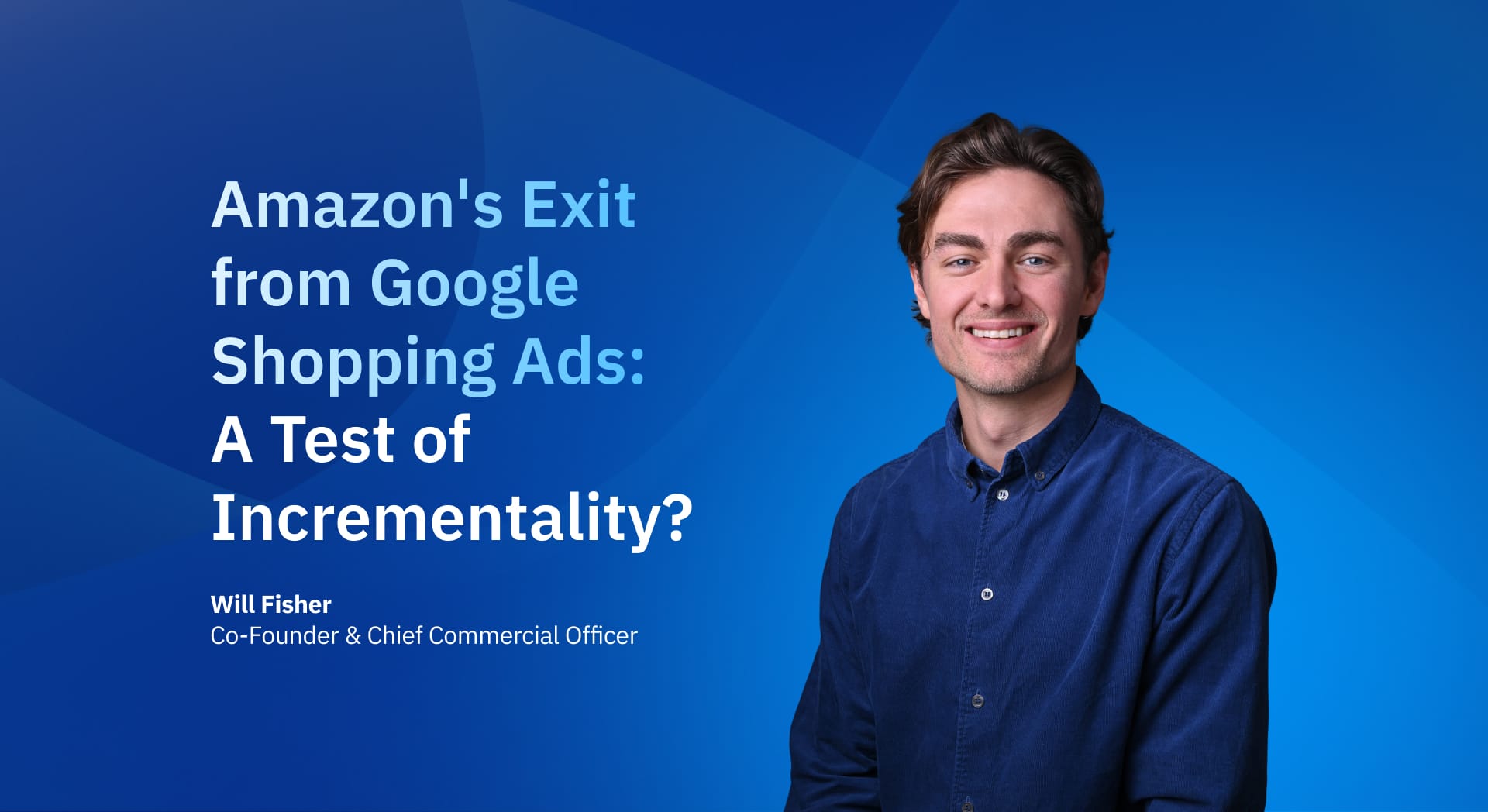
In a recent development that has quietly disrupted the digital advertising landscape, Amazon has fully withdrawn from Google Shopping Ads across all major markets.
Between July 17 and 23, 2025, Amazon’s Shopping impression share dropped to 0% in the U.S., U.K., Germany, and over 20 other countries — a global disappearance confirmed by multiple sources including DigiDay, and AdExchanger. And whilst Amazon hasn’t given a statement on this yet, we ask the question: could this be a simple test of incrementality?
What Is Incrementality, and Why Does It Matter?
In simple terms, incrementality measures the true value of a marketing channel. It asks: What additional revenue or conversions are we getting from this ad spend — that we wouldn’t have achieved otherwise?
This goes beyond attribution models that reward the last click. Google Shopping Ads, in particular, are optimized to intercept consumers already near the point of purchase. For brands without strong awareness or SEO presence, they’re essential. But for a brand like Amazon — with unmatched reach, brand loyalty, and direct traffic — the real question is:
“Are we paying to convert customers who would have purchased anyway?”
This is why turning off the taps completely creates a cleaner data environment than a slow reduction. Amazon now has a rare, clear window to measure how much impact Google Shopping actually has on revenue, traffic mix, and conversion rates.
Why This Is Not Just Budget Management
Some speculate Amazon pulled spend to avoid funneling advertising dollars into a competitor’s ecosystem. Others believe it’s a way to refocus budgets on their own media platforms — like Amazon DSP or Sponsored Products — or even an interlude between Prime Day and Black Friday.
But the global, synchronized, and abrupt nature of this exit suggests something more deliberate:
✅ Amazon exited Shopping Ads in all major markets at once
✅ No explanation or soft messaging — just a drop to 0% impression share
✅ No indication of a temporary cut or pause — this is a clean break
The characteristics align with how incrementality tests are run in performance marketing: isolate the variable, turn off the spend, and monitor the downstream effects.
What This Means for Brands
Even if your brand doesn’t advertise on Google Shopping directly, this shift has ripple effects:
📉 External Traffic to Amazon May Decline
If you’ve benefited from Amazon’s ad-driven traffic before, you may see a dip in sessions from off-Amazon sources. Monitor Amazon Brand Analytics closely.
📈 Amazon Ads May Get More Competitive
As Amazon redirects focus internally, expect upward pressure on CPCs. If you’re not optimizing Sponsored Ads, now is the time.
💡 Smaller Advertisers May Gain Ground on Google
Amazon’s absence opens up auction space. Brands that were previously priced out of Google Shopping now have a window to test cost-effective acquisition.
🔍 Attribution Models Must Evolve
This moment highlights why performance advertisers — and the brands they support — must look beyond surface-level metrics. Incrementality isn’t a buzzword. It’s a survival strategy in a multi-channel world.
Our Advice at Amerge
If Amazon’s pulling back to test incrementality, you should be thinking about it too. Here’s what we recommend:
🔎 Audit your Amazon traffic sources: Look for shifts in session volume or conversion rates that could be linked to reduced external traffic.
📅 Set up a call with you Amerge/Amazon Ads Rep:
Dive into category trends, traffic and performance. Leverage untapped and cost effective opportunities to drive traffic if you’ve seen a drop.
📊 Build incrementality into your internal reporting: Start measuring media impact based on contribution, not just correlation.
💡Test your own incremental strategies on Amazon – ask your Amerge rep for more info: Ensure total sales is integrated to your reporting and shape your strategy to be predominantly prospecting. ROAS may drop – but total sales will increase.
💡 Test your own Google Shopping ads using Amazon Attribution: Amazon isn’t in the auction — but you still should be.
📈 Prepare for more internal competition: Refine your Amazon Sponsored Ads strategy whilst bids may increase – set clear KPI’s and audit keyword lists.
📈 Leverage Amazon DSP and 3rd Party Inventory: A cost effective way to boost traffic and glance views by utilising Amazon’s 1st party data and 3rd party inventory.
Final Thought: A Smarter Shift Is Underway
Amazon’s exit from Google Shopping isn’t a retreat. It’s a signal — one that the rest of the industry should take seriously.
As marketing budgets tighten and performance expectations rise, advertisers can no longer afford to invest blindly. Spend must be tied to true business outcomes, not vanity metrics or legacy logic.
At Amerge, we help brands build attribution models that reflect reality — and marketing strategies grounded in incrementality, profitability, and long-term growth.
The days of “more spend = more results” are over.
The future belongs to brands who understand where growth really comes from.
Let’s make every click count.
Need help navigating this shift or rethinking your attribution strategy? Get in touch — we’re here to guide you through it.


